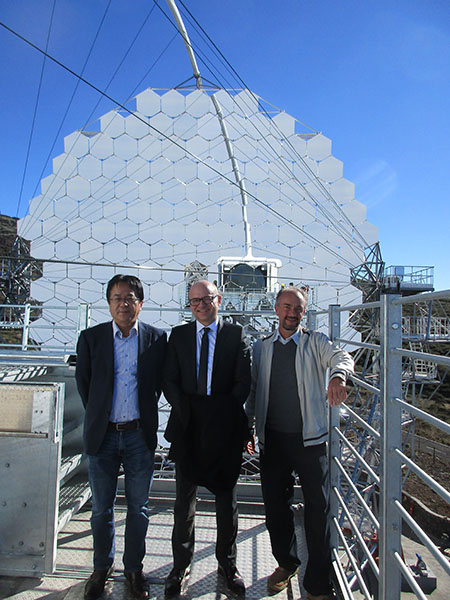The high-energy astrophysics group at the Centre for Space Research at the North-West University (NWU) is playing an important role in key science programmes at the Cherenkov Telescope Array (CTA) that will be built in Chile.
The final agreements between the CTA Observatory and the European Southern Observatory were signed late last year to begin construction on the site in the Atacama Desert in Chile.
The NWU’s Prof Markus Boettcher says the high-energy astrophysics group is a member of the CTA Consortium that consists of approximately 1 400 scientists from around the world. The high-energy astrophysics group has been involved in defining the key science programmes that will be conducted in the first years of the CTA’s operations.
“The NWU has also invested R3,5 million in an Italian-led sub-project of CTA, called ASTRI, to construct the small-sized telescopes that will be part of the southern CTA in Chile,” explains Prof Boettcher. “A postdoctoral student employed by the NWU is working directly with the ASTRI-team in Italy on the commissioning of the prototype of these telescopes on Mount Etna in Sicily.”
Prof Boettcher is also the chairman of the South African Gamma-Ray Astronomy Programme. He says groups of scientists from the NWU, University of Johannesburg, Wits University and the University of the Free State – all members of the CTA Consortium – are funded by the National Research Foundation through a block grant to the South African Gamma Programme.
The construction of the southern array in Chile and the northern array in La Palma, Spain, is expected to begin in 2020. To provide access to the whole sky, the CTA Observatory will have these two array sites and 19 telescopes in the northern hemisphere and 99 in the southern hemisphere.
The CTA will be the next generation ground-based instrument in the detection of gamma rays. These are very high-energy electromagnetic radiation emitted by the hottest and most powerful objects in the universe – such as supermassive black holes, supernovae and neutron stars.
The site in Chile is located in one of the driest and most isolated regions on earth, which will provide ideal conditions for year-round observations. The CTA will be the largest and most sensitive array of gamma-ray telescopes in the world with unprecedented accuracy, and it will be 10 times better than existing instruments.
Prof Boettcher says although the earth’s atmosphere prevents gamma rays from reaching the surface, CTA’s mirrors and high-speed cameras will capture the short-lived flashes of eerie blue Cherenkov radiation produced when gamma rays interact with the atmosphere.
“By detecting this Cherenkov light, scientists will be able to trace the gamma ray back to its cosmic source.”
In front of the Large-Size Telescope (LST) in La Palma, Spain, are Prof Markus Boettcher with Jürgen Knödlseder, the chairperson of the CTA Consortium Board, and Masahiro Teshima, the chairperson of the LST.
